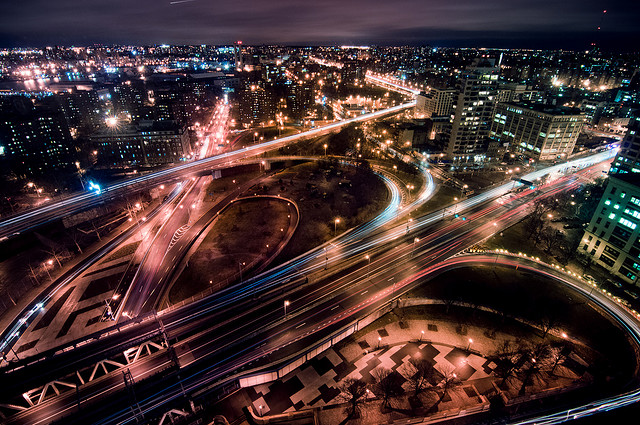
It’s generally accepted as fact that people in big cities drive less. Things are closer together there, making it easier to walk to the store for a gallon of milk. For longer trips, mass transit is also an option. But boiling all that common sense down to a single number is difficult. And though our data-happy society can overdo it at times, numbers can reveal some surprising facts that simple observations otherwise wouldn’t—like the fact that increasing density reduces the amount people have to drive, but not by as much as you might suspect.
Determining precisely how far people drive—vehicle mile travelled (VMT) in the parlance of the field—is important for a number of reasons. With it, we can gauge greenhouse gas emissions from automobiles, allocate resources for road repairs or expansions, and refocus efforts to reduce car dependency. VMT is especially important in California, where the Global Warming Solution Act (also known as AB 32) calls on the state to reduce greenhouse gas emissions by 25 percent below 1990 levels by 2020. Cities and counties without a plan to reduce emissions within their jurisdictions risk losing transportation funding. With this in mind, two researchers from the University of California, Berkeley, set out to measure VMT per person in 370 urban areas around the United States and see how the built environment affects that number.
They discovered that people in more urbanized areas do drive less, but not that much less. Their lowest estimate for VMT was based on population density, but their more realistic result, which came from a model with more parameters, shows less of a reduction. Ironically, greater density is to blame for the lower than expected drop in VMT. As population density increases, VMT drops, but the densities of roads, shops, and services rise, all of which encourage automobile trips.
Urban areas need more roads because they have more traffic, which in turn tends to encourage more traffic. The researchers call it the “Los Angeles effect.” As Los Angeles filled the San Fernando Valley, it didn’t follow central travel corridors. Rather, it oozed out like a blob. This not only hindered mass transit in the city, it also required more roads to accommodate people’s varied travel patterns. The result is a “thicket of criss-crossing freeways and major arteries that form a dense road network,” the study’s authors write. Though Los Angeles is an extreme example of the road/population density relationship, other cities suffer from the malady, too.
The second curiosity that drives VMT in cities is the density of shops and services. It’s often easier to find a wider variety of goods and services closer to home in a city, which encourages people to leave home more often. So while people in cities still drive less, they don’t drive as little as they could.
Source:
Cervero, R., & Murakami, J. (2010). Effects of built environments on vehicle miles traveled: evidence from 370 US urbanized areas Environment and Planning A, 42 (2), 400-418 DOI: 10.1068/a4236
Photo by Josh Liba.
Related post:
Tell me how much you drive, and I’ll tell you where you live